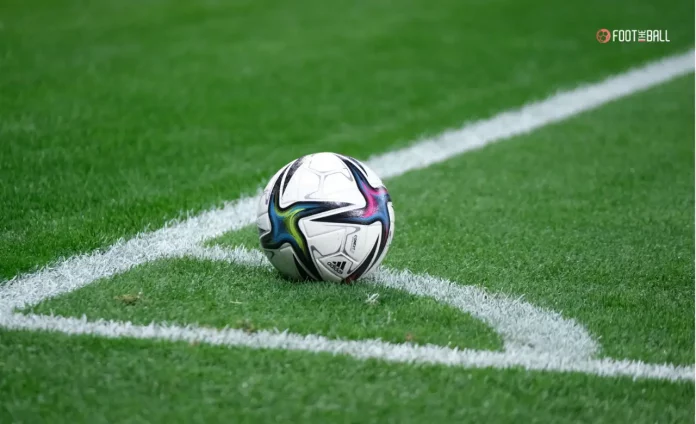In football, working through the intricacies of rules and regulations is often like reading an old manuscript. But don’t panic; We are here to clarify the basic rules that govern the beautiful game. Let’s break down each concept in turn and examine the basics of football Rules of the Game.
Law 1: The Field of Play
The football field is a stage for the drama that unfolds during games. No matter the beautiful synthetic grass of the training pitch or the green of the stadium, the pitch must follow precise measurements and markings and knowing the layout of the pitch is important for players and spectators, because it costs everything from aiming to adding strings
Law 2: The Ball
The spherical object known as a football is the essence of any soccer game. In order to ensure fair and consistent play, strict details of ball size, shape and fixtures must be overcome. The ball remains an integral part of football, whether it is handled by a quick young touch or a thundering experienced player
Law 3: The Number of Players
The performance of each team is very important to the development of the game because football is a team sport. To be successful on the pitch, it’s important to understand each player’s role and responsibilities, regardless of formation—which can range from a standard XI player to the variety found in youth league friendlies
Law 4: The Players’ Equipment
Football players wear functional and regular equipment. From cleats and shin guards to jersey shorts, each piece of equipment is designed to protect athlete safety and improve performance It is important to adhere to equipment guidelines to protect fair competition.
Law 5: The Referee
The referee, as the ultimate authority on the field, plays a vital role in enforcing the rules of the game and maintaining order during play. The decision of the referee is final, from misconduct to controlling the progress of the game and must be respected by players and spectators
Law 6: The Assistant Referees
Assistant referees play a vital role in various aspects of the game such as signaling fouls, offside fouls, and assisting the referee in off-game situations to ensure correct and accurate footing They listening and communicating with the referee contributes to the smooth running of the game.
Law 7: The Duration of the Match
Football is divided into two halves, each lasting 45 minutes, beginning with the blowing of the referee’s whistle and ending with the blowing of the referee’s final whistle Overtime may be added at the discretion of the referee for compensation suspended play costs to ensure fairness and balanced competition.
Law 8: The Start and Restart of Play
The game begins with a kickoff in the middle of the half, with one team starting the game and the opposing team setting up accordingly. It resumes when goals are scored or play is suspended for other reasons, such as fouls or injuries, and enforces specific procedures to ensure fairness and playability
Law 9: The Ball In and Out of Play
Determining whether the ball is in or out of play is essential to understanding how the game unfolds. If the ball crosses the touchline or goal line, or if the referee calls a timeout for any reason, it is considered a non-play, with specific rules for resumption of play
Law 10: The Method of Scoring
The ultimate goal of soccer is to score, where each successful kick crosses the goal line to add to the team as a whole. Understanding the criteria for a valid goal, and what the outcome of the match will be, is important for players and spectators alike.
Law 11: Offside
Offside rules are one of the most complex and controversial aspects of football, and it is important for players and officials to understand the nuances of establishing and interpreting an offside to prevent attacking players from getting it there is an unfair advantage to the security.
View this post on Instagram
Law 12: Fouls and Misconduct
Mistakes and misconduct are inevitable in any game of football, specific penalties and disciplinary procedures are in place to ensure quality play and playability It is important that all players understand the consequences of fouls directly from free kicks taken directly for serious offenses down to yellow red cards for misconduct
Law 13: Free Kicks
Free kicks give teams a tactical advantage to regain possession, create scoring opportunities, or take advantage of opponents’ mistakes. Understanding the difference between direct and indirect free kicks, and the specific circumstances in which they are awarded, is critical to effectiveness
Law 14: The Penalty Kick
Penalties are one of the most important moments in football, often deciding the outcome of a fiercely contested game. It is important for receivers and defenders to understand the rules and regulations regarding penalties, including the role of the goalkeeper and ball placement
Law 15: The Throw-In
If the ball goes away from the touchline, the main way to resume play is to throw. Understanding proper form and rules for infractions, as well as the consequences of rule violations, is important for players at all levels of the game
Law 16: The Goal Kick
Scoring a goal gives the opposing team a fair chance to recover and move from defense to attack. It is important to understand the techniques and rules of kickball, as well as the role of the players involved and maintain speed and control
Law 17: The Corner Kick
A corner kick provides an excellent opportunity for the attacking team to create scoring opportunities while also putting pressure on the opposition defence. The nuances of using and defending corner kicks, such as positioning, technique, and rules, are important to maximize effectiveness and minimize the risk of a goal being saved
Read more: Mastering Soccer Field Measurements
A thorough understanding of the rules of the game of football allows players and fans to navigate the field with confidence and clarity. From the size of the pitch to the difficulty of the game, each rule adds to the glamor of the soccer world. So, whether you are a seasoned fighter or a newcomer to the game, mastering the 17 rules of football is the key to discovering the true essence of the beautiful game.




